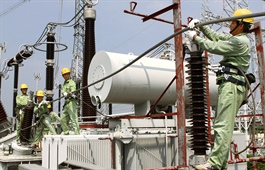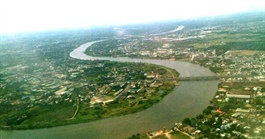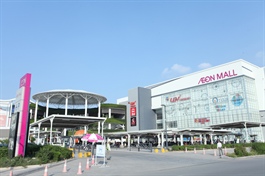Lowering logistics costs key to competitiveness
Lowering logistics costs key to competitiveness
Lowering logistics costs is key to increasing the competitiveness of Viet Nam’s export products and the whole economy.

The latest figures of the Viet Nam Logistics Association revealed that logistics costs were equivalent to around 20-22 per cent of the country’s GDP, much higher than Thailand (19 per cent), China (18 per cent), Malaysia (13 per cent) and nearly three times higher than the US and Singapore (8 per cent).
The association pointed out that about 4,000 enterprises were providing logistics services in Viet Nam, 97 per cent of which were micro, small and medium-sized enterprises.
However, service quality, capital, information technology application, digital transformation and human resources remained limited.
Tran Duc Nghia from the association said that logistics costs were pushed up by high road transport costs, seaport surcharges and limitations on seaport infrastructure.
For example, the fee to transport a container from Hai Phong to HCM City by sea was around VND5-7 million, compared to VND30 million by road.
Logistics services in Viet Nam were largely dependent on road transportation which accounted for nearly 80 per cent, while railway, waterway and airway made up for the rest altogether.
According to the association, about 90 per cent of companies operating in logistics in the country were domestic but held a modest market share of 30 per cent while foreign ones still had a dominant share.
Nghia said that in the short term, the logistics industry needed to strengthen the ability to adapt to risks in the supply chain and accelerate the process of digital transformation and applying information technology.
In the long term, it was necessary to improve the legal framework to create favourable conditions for the development of the logistics industry while promoting multi-model and cross-border transport and low-cost transport.
Nghia urged Vietnamese firms to participate in the global value chain to gain experience, adding that Viet Nam had significant advantages in promoting production, export and logistics services, given the country’s position in the region’s dynamic development area.
According to Dinh Huu Thanh, chairman of Bee Logistics Corporation, strengthening the linkage among factors in the logistics supply chains was important to promote the logistics industry and enhance its competitiveness, including customs, warehouses, and road transportation providers and forwarders.
Vu Ba Phu, director of the Viet Nam Trade Promotion Agency, said that the boom of the Industry 4.0 was forcing logistics centres to apply advanced technologies to be more efficient and productive.
The focus should also be placed on developing the transport, seaport, warehouse infrastructure, and high-quality human resources synchronously and simplifying administrative procedures.
In the context of Viet Nam’s rapid integration with the signing of several free trade agreements, developing modern logistics infrastructure would give a push to export growth, especially when the world was facing uncertainties due to the pandemic, the Russia – Ukraine conflict and climate change, which made food and materials exchange more urgent than ever.




















